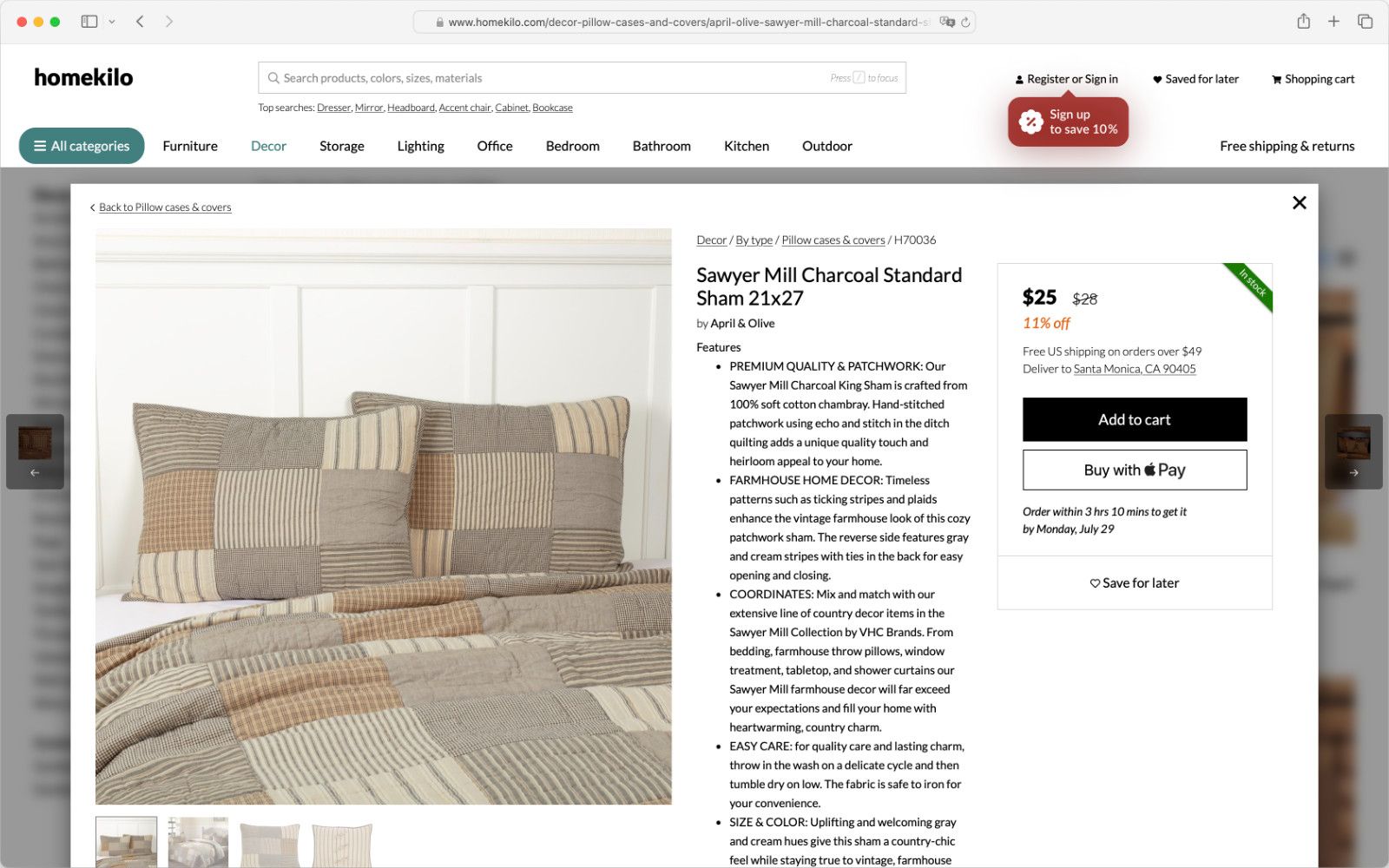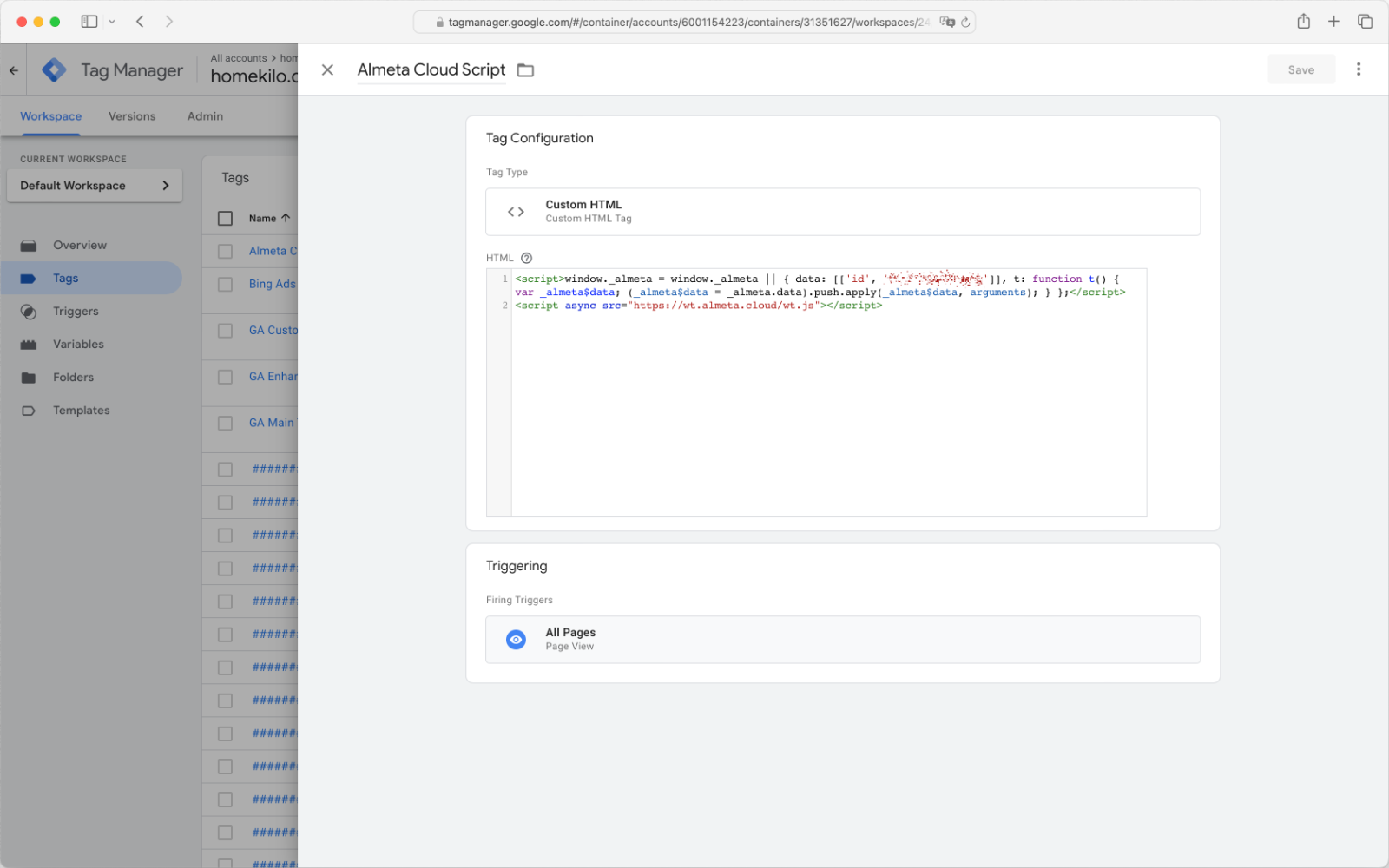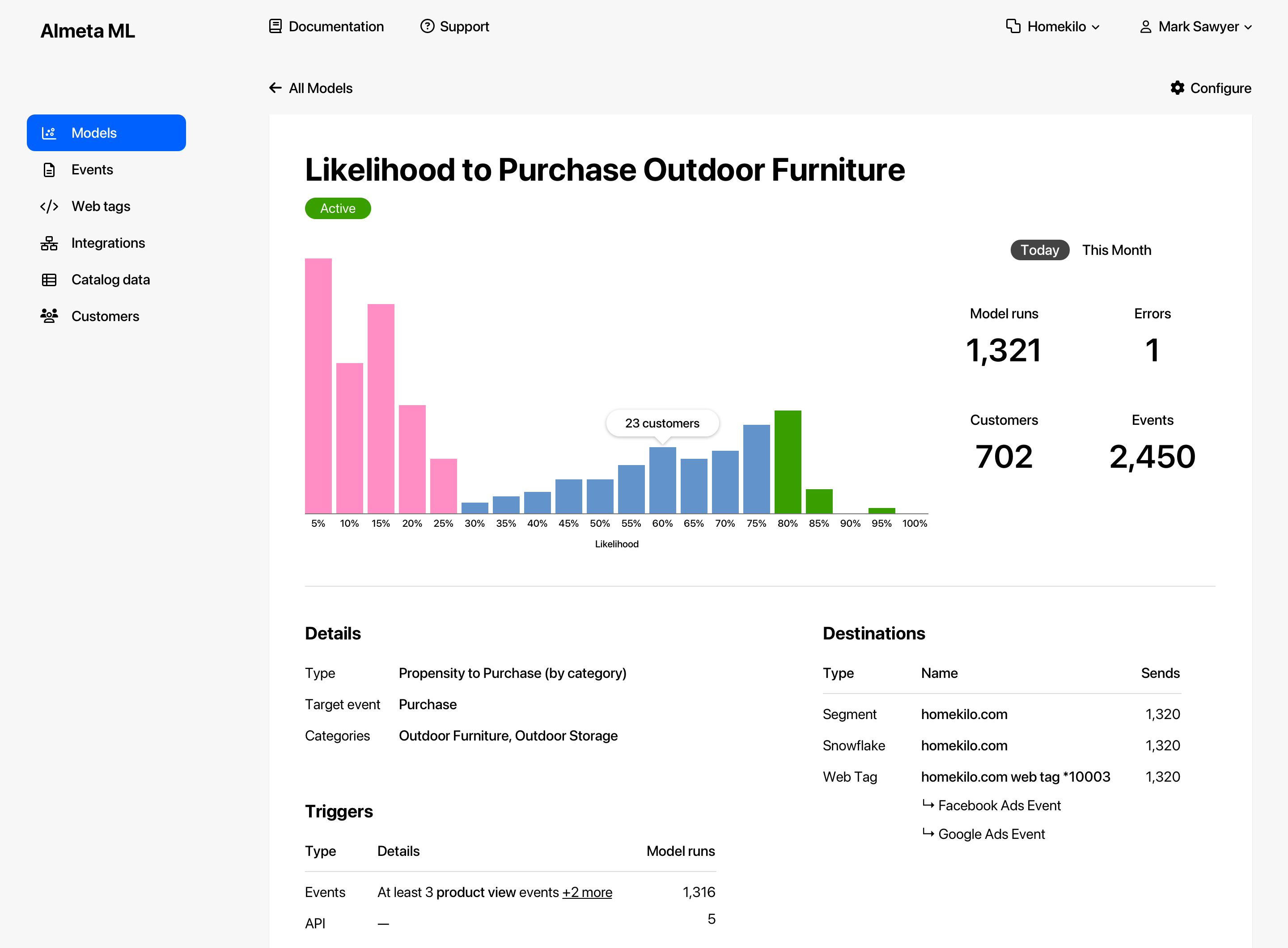How Homekilo Doubled Return on Ad Spend with Predictive Targeting
Predictive metrics enable targeting audiences that were not possible before. This case study shows how Homekilo doubled ROAS by targeting audiences based on customer intent predictions like propensity to purchase.
Homekilo is an online store that sells home decor products. They use digital advertising for initial customer acquisition and retargeting, so optimizing ad spend is crucial for the business.

The Use Case
Customers often visit an online store multiple times before commiting to a purchase, so retargeting was always an important part of Homekilo's marketing strategy.
Homekilo was retargeting visitors who had viewed their products but not purchased. Most of their retargeting ads were running through Meta Ads and Google Display Network.
The conversion rate from retargeting ads was higher than from prospecting ads, but most of the ad spend was still being wasted on visitors that were not converting. Homekilo wanted to improve the return on ad spend (ROAS) by focusing on the visitors who are highly likely to make a purchase.
A/B Testing Predictive Targeting
We started by splitting the retargeting audience into two groups: one group was targeted using predictive metrics, and the other group was targeted using traditional retargeting audiences. Both groups were shown the same ads on Google Search, Display Network, and Facebook.
The test was run for two weeks.
Setting Up Audiences
We used Google Tag Manager to set up event tracking for Almeta ML on Homekilo's website to capture visitor behavior data. To avoid waiting for the data to be collected, we imported historical behavioral data from Homekilo's own data store and converted it to the standard event format for Almeta ML.

Next, we created a machine-learning model in Almeta ML with the following settings:
- Model Type: Propensity to Action
- Target Event: Purchase
- Inputs: All Events
- Training mode: Continuous
- Triggers: Content View, Search, Product View, Add to Cart, View Cart, Start Checkout
- Destinations: Web Tag
The model was trained on historical data. We then created a trigger in Google Tag Manager to send the predicted propensity to purchase to Google and Meta as custom events.
This enabled Homekilo to create custom audiences based on predicted propensity to purchase. We grouped the audiences into three segments: low, medium, and high propensity to purchase. Each segment was used with a different bid strategy in Google and Meta Ads, focusing more of the ad spend on the high propensity segment.
The model was run automatically for every website visitor when they set off any of the trigger events. The predicted propensity to purchase was sent to Google and Meta Ads in real time.

Results
The test showed that the audience targeted using predictive metrics had a 2.2x higher ROAS than the audience targeted using traditional retargeting audiences. The conversion rate was also higher for the audience targeted using predictive metrics.
CTR, cost per click, and other advertising metrics correlated with low, medium, and high probability to purchase. The high probability segment had the highest CTR and the lowest cost per click.
Additional savings were achieved by reducing the ad spend on the low probability segment. It still drove some conversions, but moving a large portion of the ad spend to the high probability segment increased the overall returns.
Conclusion
Predictive targeting based on customer intent predictions like propensity to purchase can significantly improve the return on ad spend. By focusing on the audiences that are highly likely to convert, Homekilo was able to double their ROAS and increase the overall conversion rate.
Implementing predictive targeting may require some initial setup, but the outcomes can be well worth the effort. Homekilo continues to use predictive targeting to optimize ad spend and improve marketing performance.
If you are looking to improve your ad performance with predictive metrics, you can set up Almeta ML on your website. Almeta ML provides a simple way to create machine-learning models and use them for predictive targeting.
Predict Customer Behavior with Almeta ML
Real-time actionable predictive metrics for your website